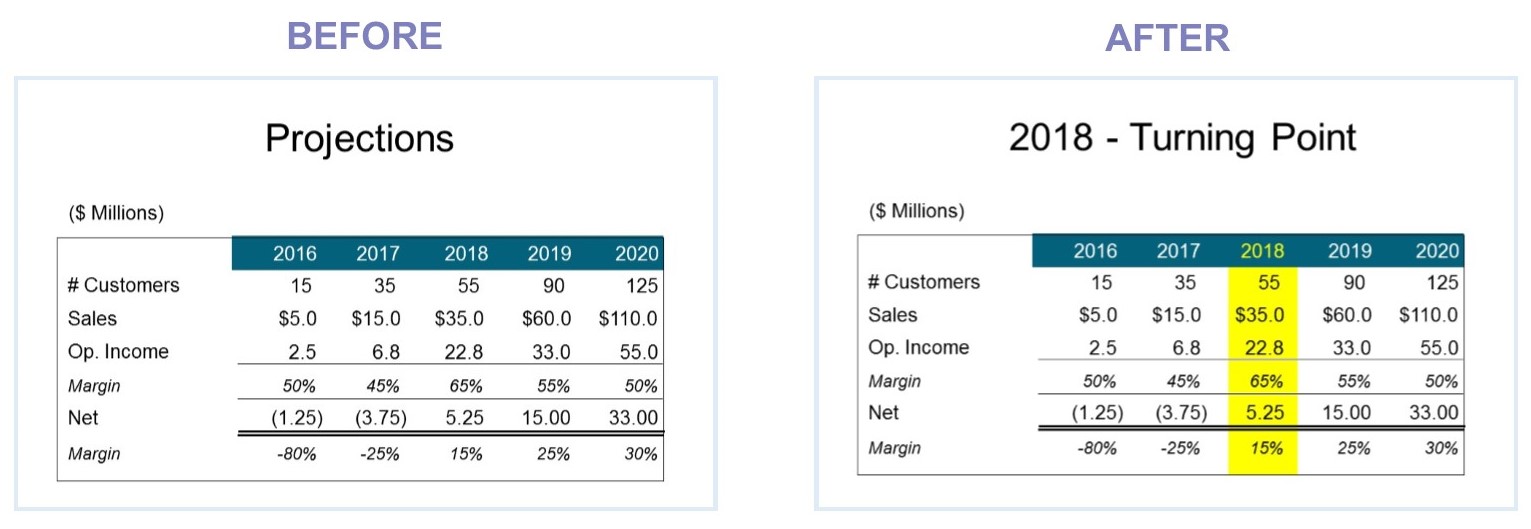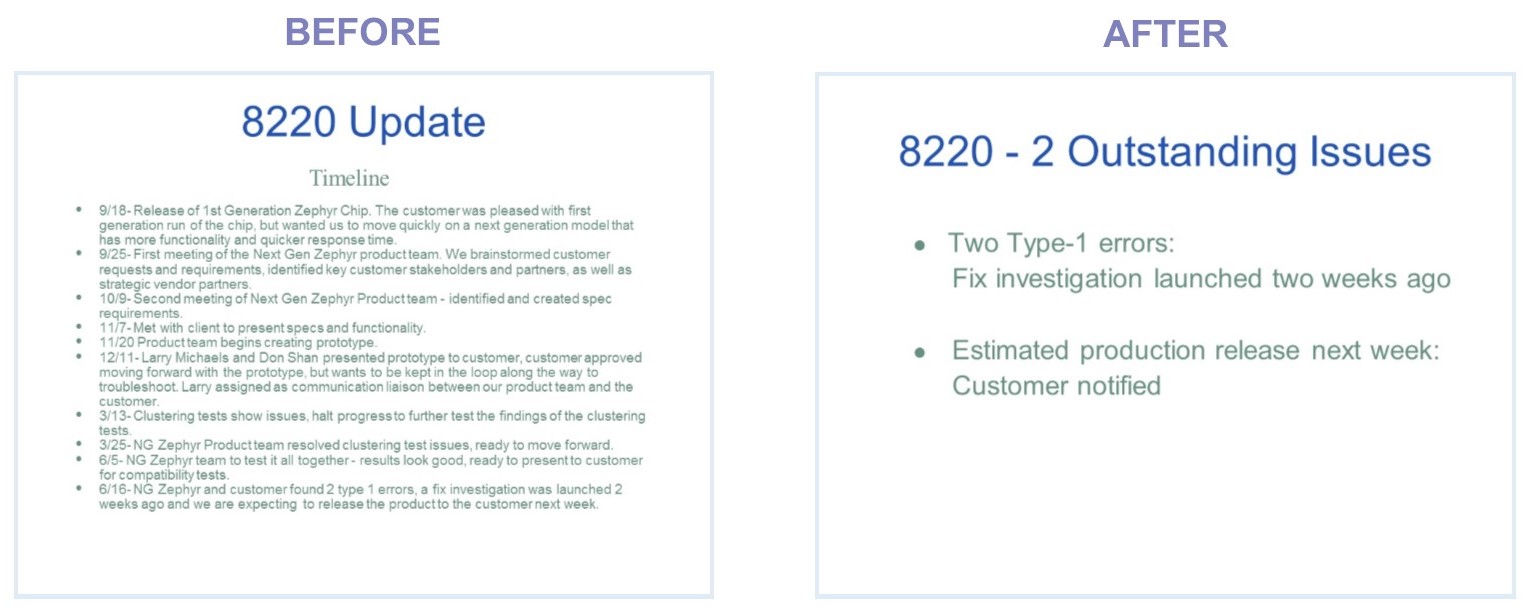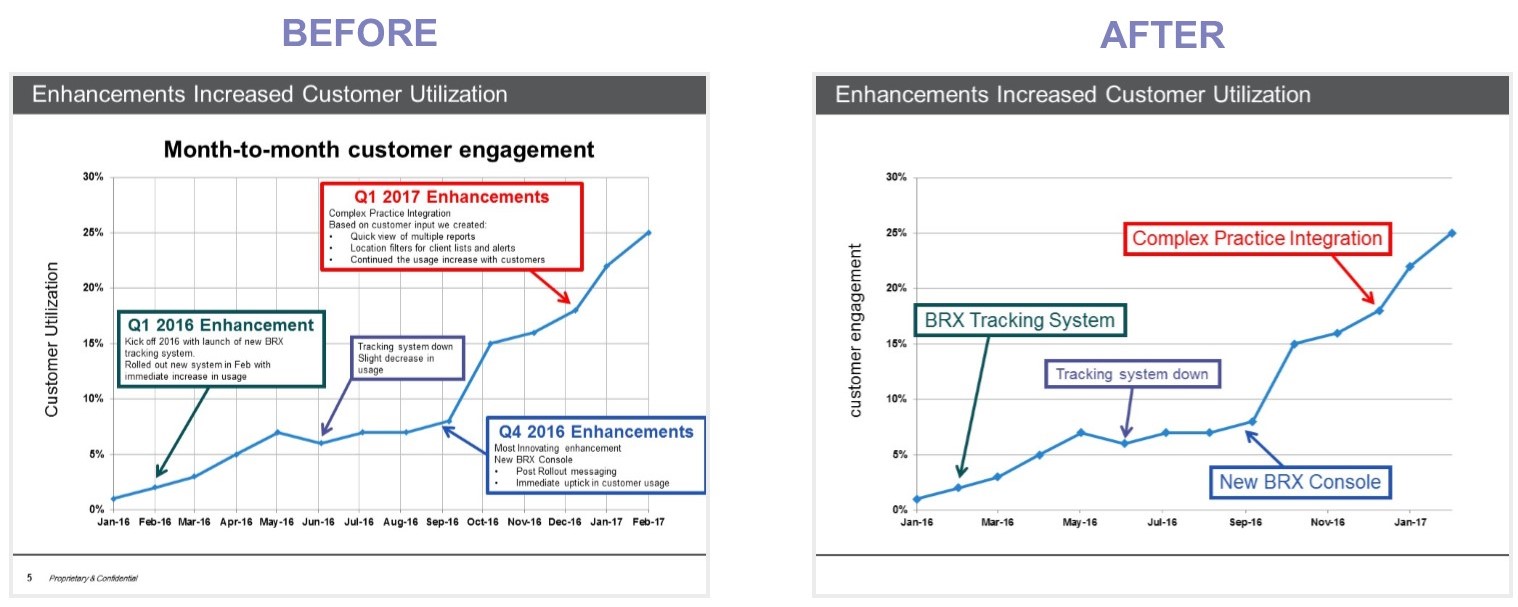When mechanical pencils, crayons, and composition books start popping up at local stores, back-to-school season is here. During my own grade school career, multi-media meant chalkboards and paper handouts. Today, slide decks have replaced chalkboards, and mimeograph ink is a distant memory.
While tools change, the benefits of multi-media learning hold true. These researched-backed, multi-media learning principles can help any audience take in information.
1. The Signaling Principle: Individuals learn better with cues to highlight what’s important.
- Presentation application: Use Action Titles on your slides to call out the key message.
2. The Redundancy Principle: Individuals learn better with pictures and narration than pictures and text.
- Presentation application: Limit the text on your slides so you can tell the story.
3. The Coherence Principle: Individuals learn better when extra information is excluded.
- Presentation application: Think about ways to simplify graphs, labels, text and images.
Whatever multi-media tool you use – your audience will best take in your information if you highlight what’s important, limit text, and simplify where you can.








